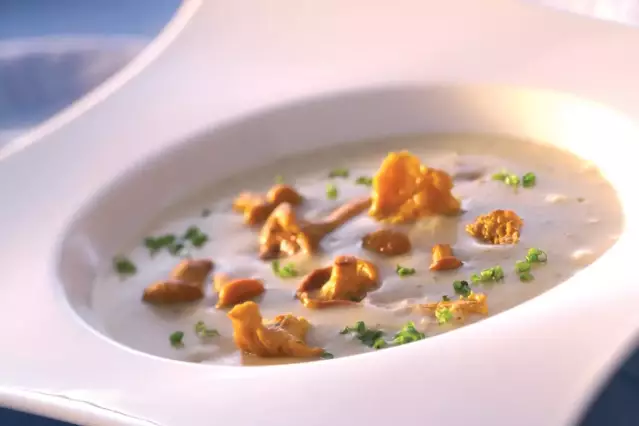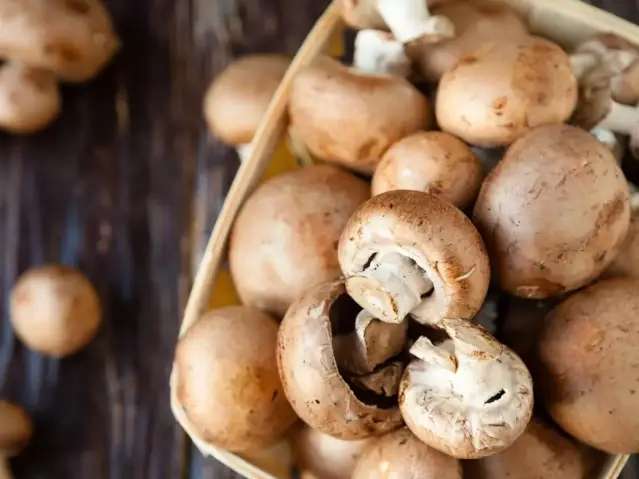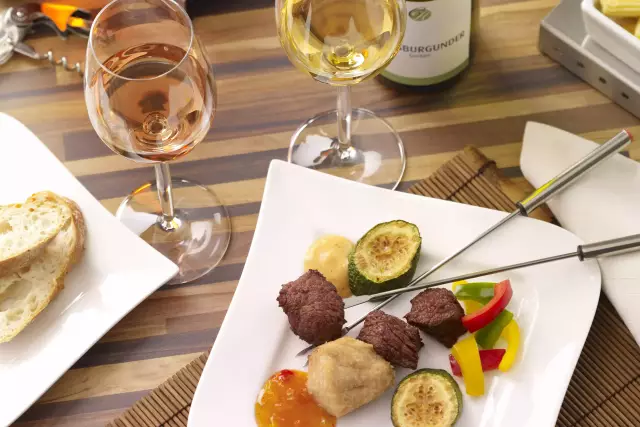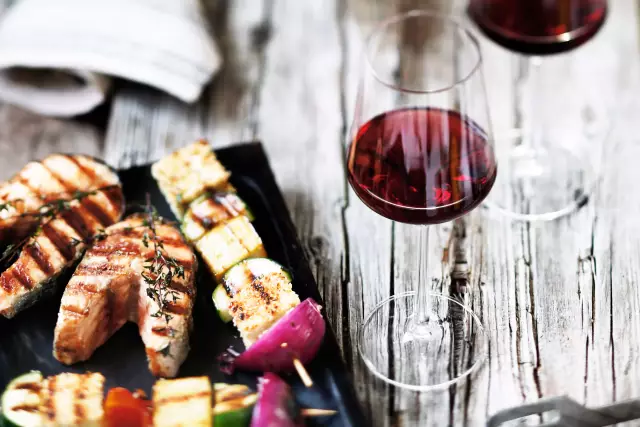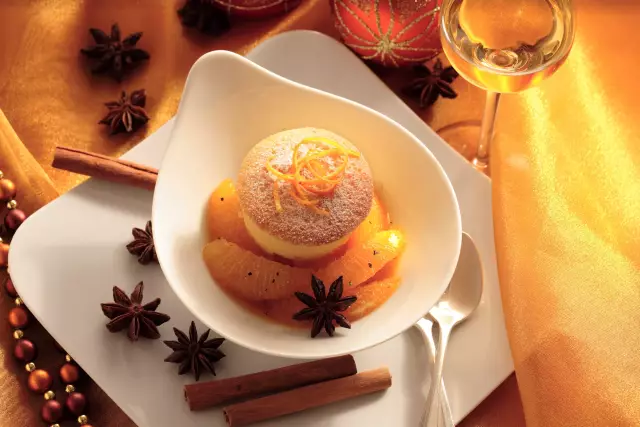Mushrooms & Wine

Wild mushrooms can be quite demanding in their choice of culinary partners and prefer wines with subtle and mild flavours. While a delicate potpourri of mixed mushrooms requires a full-bodied wine, flavours should not be too overwhelming.
Facts
-
2019
The chanterelle was the mushroom of the year
-
The fourth
Saturday in September is celebrated annually as European Mushroom Day.
-
About 2kg
mushrooms are consumed per capita in Germany every year
Delicious pairings - Wild mushrooms and wine
Take porcini, for instance: These most exquisite of all edible mushrooms form a perfect symbiotic relationship with a Pinot Blanc that is full-bodied yet delicately fruity. Even rather mature wines are great companions, since the subtle flavours of the mushrooms make them appear youthful and fresh. A mild acidity retains the harmony of this delicate, melt-in-the-mouth dish.
More expressive dishes, such as porcini or other mushrooms that have been fried to crispy perfection in butter, harmonize well with heartier wines with a fresh, fruity acidity, such as Riesling – a delectable alliance.
Wild mushrooms play a pleasant supporting role alongside a roast. In this case, the roast takes precedence in selecting the wine companion. However, wines such as a smooth Pinot Noir from the Ahr region or a subtle Meunier (Schwarzriesling) from Württemberg take care that the delicate mushroom flavours don’t get lost in this expressive mélange.
Mushrooms as a main dish, with a rich creamy sauce and dumplings, require a subtly fruity fresh Riesling that counters the exquisite opulence of the dish with its vivacity.
Autumn creations - wine harmony guaranteed
Whether you require a companion for delicately flavoured wild mushrooms or pumpkins: In the cellars of the German winemakers, a parade of fantastic wines is ready to give a brilliant performance on your table. And Wines of Germany has a few simple guidelines for you to follow – to avoid even the slightest hints of disharmony creeping into these alliances.
Wild mushrooms such as porcini, bay boletes and chanterelles
Braised, wild mushrooms tend to display extremely delicate flavours and acquire a melt-in-the-mouth touch. Most often, they are lightly sautéed in a frying pan with onions, only seasoned slightly and rounded off with a dash of lemon, in order to preserve their subtle nutty taste. Suitable wine companions should also help to retain the delicate mushroom flavours. A gentle Pinot Blanc or a Silvaner from Rheinhessen does a great job.
Crisp-fried in butter, porcini develop very distinct nuances. Their typical flavours form a delicious alliance with the delicate roast aromas. A smooth Riesling with a moderate fruity acidity is a welcome companion. It showcases the spicy nuances of the mushrooms. As far as red wines are concerned, a more distinctly fruity Pinot Noir or Portugieser fits the bill.
In a creamy sauce, mushroom dishes are not exactly light fare. A full-bodied Riesling or classic Pinot Gris makes for a happy combination. The wine’s balanced acidity, subtle richness and maybe even a hint of residual sugar are excellent counterparts for the potpourri of flavours created by braised mushrooms, cream and fresh herbs.
Mushrooms play an expressive supporting role alongside a roast. In this kind of menu, the roast takes precedence in selecting the wine companion. However, it’s a good idea to also pay attention to a harmonious relationship between wine and mushrooms. Smooth red wines with balanced tannins such as Pinot Noir from Baden or the Ahr region are commendable. Hearty red wines rich in tannins would take center stage here – and drown out the delicate mushroom aromas.
Can wines themselves develop a mushroom or champignon aroma?
Yes! This aroma manifests itself in earthy, spicy tones such as forest floor or foliage, but in extreme form it can also develop into an off-flavor. This strong mushroom note is caused, among other things, by the substance geosmin, which in turn can be caused by botrytis infestation.
Varietals

Light and fluffy: cashew coconut mousse with passion fruit Cashew coconut mousse with passion fruit
An airy cashew coconut mousse with passion fruit
- 400g Cashewkerne
- 400ml Haferdrink
- 6EL Agavendicksaft
- 6EL Kokosflocken
- 4 Passionsfrüchte
- 1 Prise Vanille
Place the cashews in a container and add enough water to cover the cashews sufficiently. Place the cashews in the fridge to soak overnight.
(With a high-performance blender, 3-4 hours is also sufficient.)
Drain the water and place the cashews in the blender with the oat milk, agave syrup and coconut flakes. Add the vanilla and blend until the mousse is creamy and no longer contains any chunks.
<p
<p>Divide the mousse between four glasses. Halve the passion fruit, scrape out the flesh with a teaspoon and place on top of the mousse. Decorate with coconut flakes.
- Pinot Blanc (süß & edelsüß)
- Riesling (süß & edelsüß)
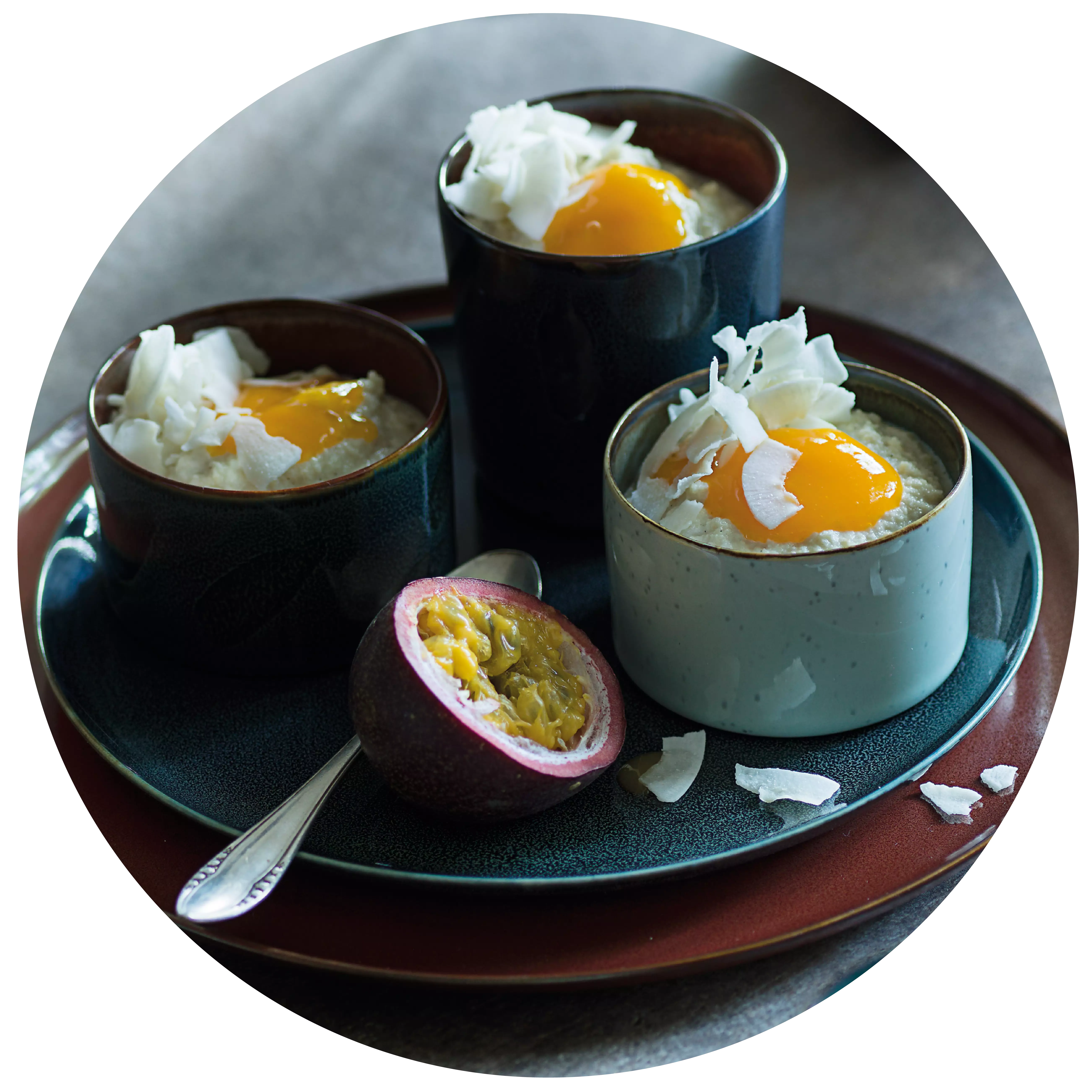
with apples Pork medallions
with apples
- 8 Stück Schweinemedaillons
- 500 Gramm Bandnudeln
- 2 große Äpfel
- 200 ml Sahne
- 10 Blättchen frischer Salbei
- 4 Zweige frischer Thymian
- nach Geschmack Zucker
- 3 EL Calvados
- 1 EL Öl
- zum Abschmecken Salz & Pfeffer
Slightly pepper and salt the medallions on both sides. Pluck the thyme, cut the sage into fine strips and roll the medallions in the herbs. Fry the meat in a pan with a little oil on both sides, not too hot, until it starts to colour. Remove from the pan and place on a preheated tray in the oven at 100 °C until cooked through.
Cook the tagliatelle al dente and keep warm.
In the meantime, peel the apples and cut into slices approx. 1.5 cm wide. Reheat the meat pan and add the apple slices. After about half a minute, sprinkle 1 teaspoon of sugar over the apples and allow them to caramelise. After a minute, deglaze the apple slices with a generous dash of Calvados and flambé. Add the cream and flavour with salt and pepper.
Remove the fillet from the oven. Add the meat juices from the oven dish to the sauce and serve the fillets with the tagliatelle, apple slices and Calvados apple sauce.
<p- Riesling (trocken)
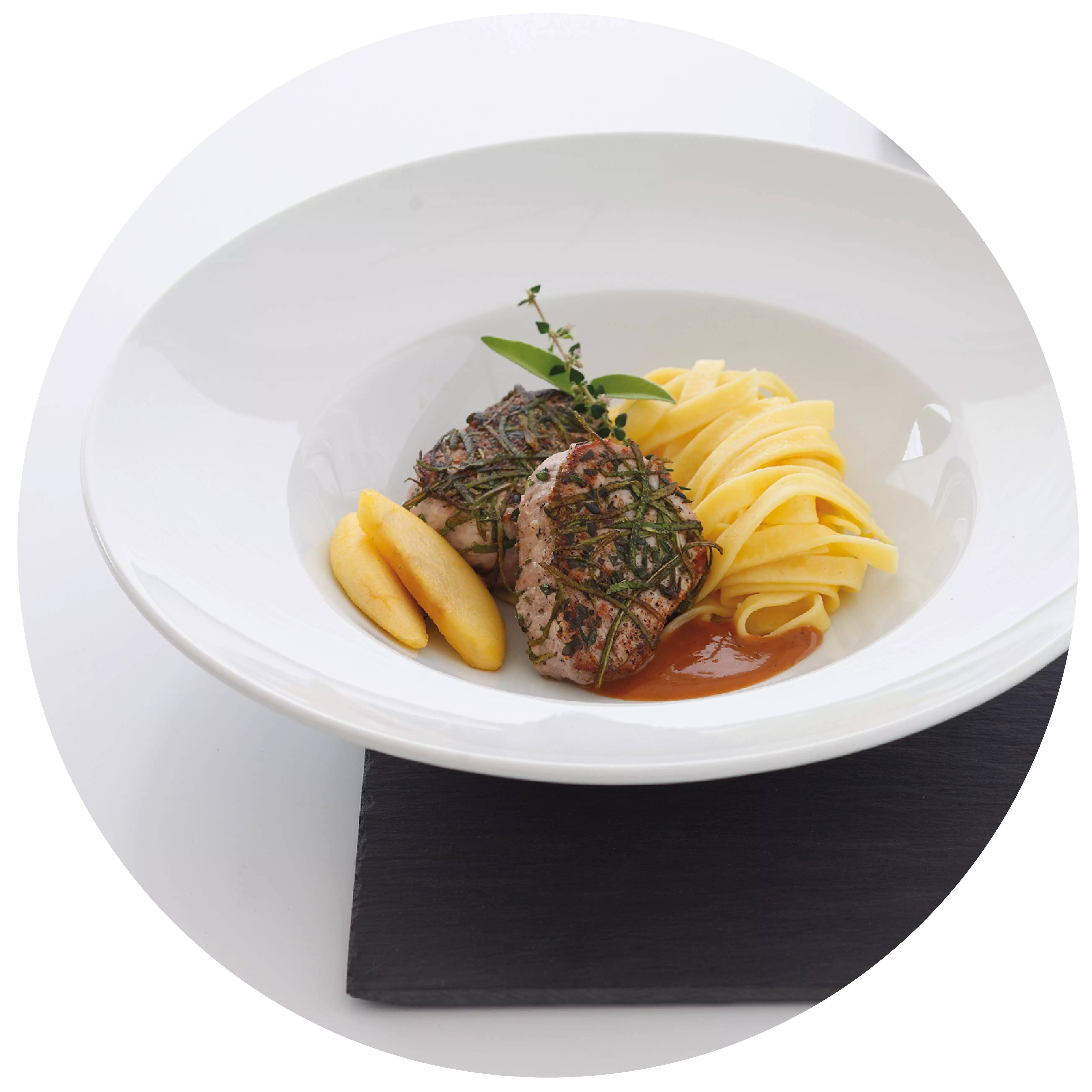
with bulgur Cabbage stew
with bulgur
- 200 Gramm Zwiebeln
- 1 ganze Knoblauchzehe
- 800 Gramm Spitzkohl
- 200 Gramm Möhren
- 400 Gramm festk. Kartoffeln
- 1 EL Kümmelsaat
- 1,5 Liter Gemüsefond
- 5 EL Olivenöl
- 2 EL Tomatenmark
- 2 EL edelsüßes Paprikapulver
- 3 TL Honig
- nach Belieben Salz & Pfeffer
- 120 Gramm grobe Bulgur
- 1 Bund Petersilie
- 4 Stiele Minze
- 1 ganze Zitrone
- 2 ganze Äpfel
- 3 EL Obstessig
Finely dice the onions and garlic. Clean, wash and quarter the cabbage, remove the stalk and roughly chop the cabbage quarters. Peel the carrots, halve lengthways and cut into approx. 2 cm wide pieces. Peel the potatoes and cut into approx. 2.5 cm pieces. Fry the carrots in a pan without fat and set aside.
Heat the vegetable stock in a small pan. Heat 3 tablespoons of oil in a large pan, sauté the cabbage in it for 10-15 minutes over a high heat until dark brown and remove from the pan.
Add the remaining oil to the pan. Fry the onions and garlic until translucent. Add the potatoes and muesli and sauté for 3-4 minutes, stirring constantly. Add the tomato purée and paprika powder and fry while stirring. Add the cabbage, honey and caraway and pour in the hot vegetable stock. Season with salt and pepper. Bring to the boil, cover and simmer for 45 minutes. Add the bulgur 20 minutes before the end of the cooking time.
Quarter the apples, remove the seeds, cut into approx. 1 cm cubes and add 10 minutes before the end of the cooking time. Pluck the herbs and chop medium-fine. Wash and dry the lemon, finely grate the zest and mix with the herbs. Flavour the stew with vinegar, salt and pepper and serve sprinkled with the herbs.
Tip: The pointed cabbage must be roasted really strongly and dark so that the aromas come out well.
- Spätburgunder / Pinot Noir (trocken)
- Trollinger (trocken)
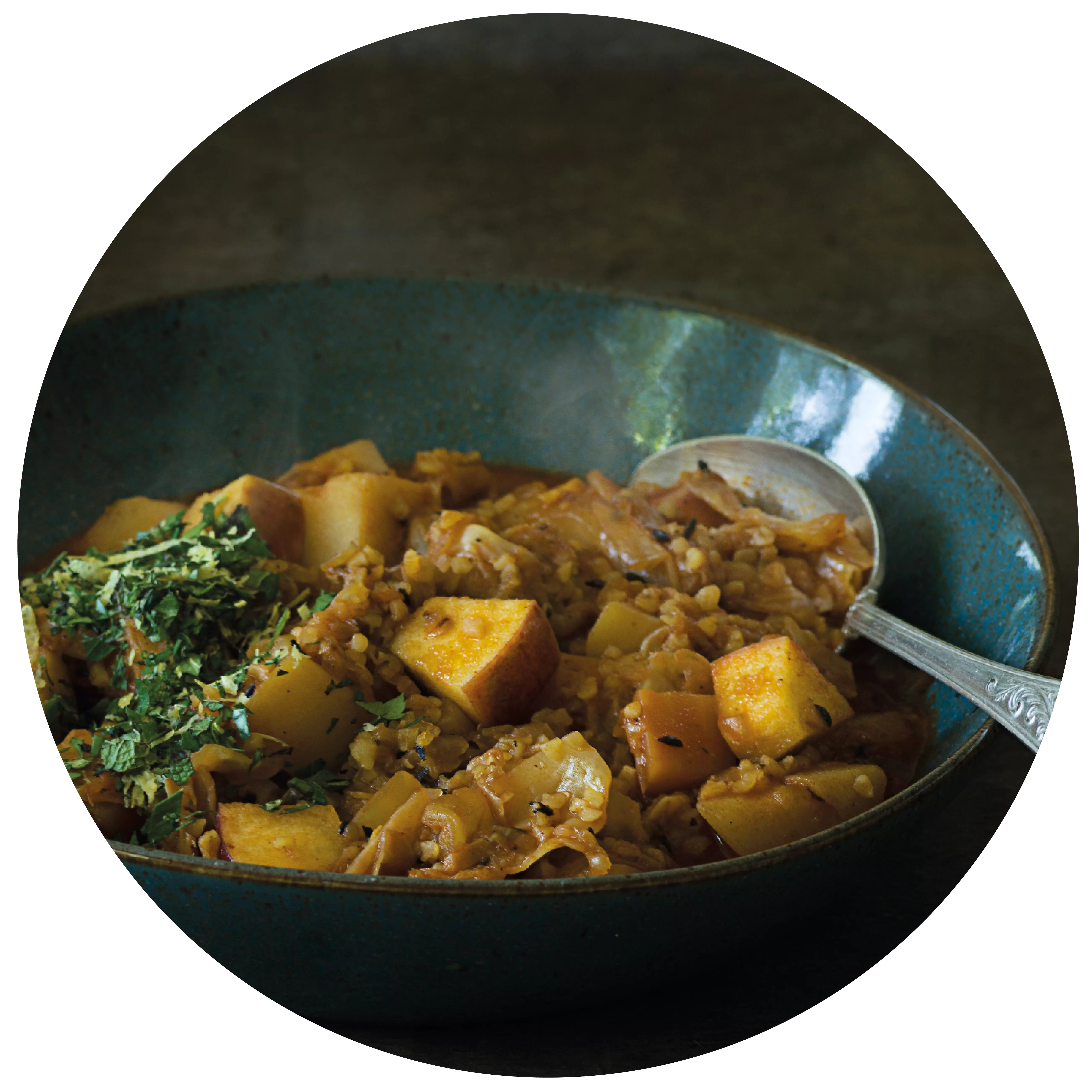
with pear wedges Chicken breast strips
with pear wedges
- 500 Gramm Hähnchenbrustfilet
- 2 reife Birnen
- 200 ml Birnensaft
- 100 ml Sahne
- 1 ganze Zwiebel
- 4 EL Olivenöl
- nach Belieben Salz & Pfeffer
Cut the chicken breast fillet into strips. Peel the onion and cut into cubes. Heat the olive oil in a pan and fry the meat in it. Add the diced onion and season with salt and freshly ground pepper.
Wash and peel the pears, remove the skin, cut into wedges and sauté in the pan. Deglaze with the pear juice and allow to reduce slightly.
<p
<p>Finally, add the cream and season to taste.
- Müller-Thurgau (halbtrocken & feinherb)
- Kerner (halbtrocken & feinherb)
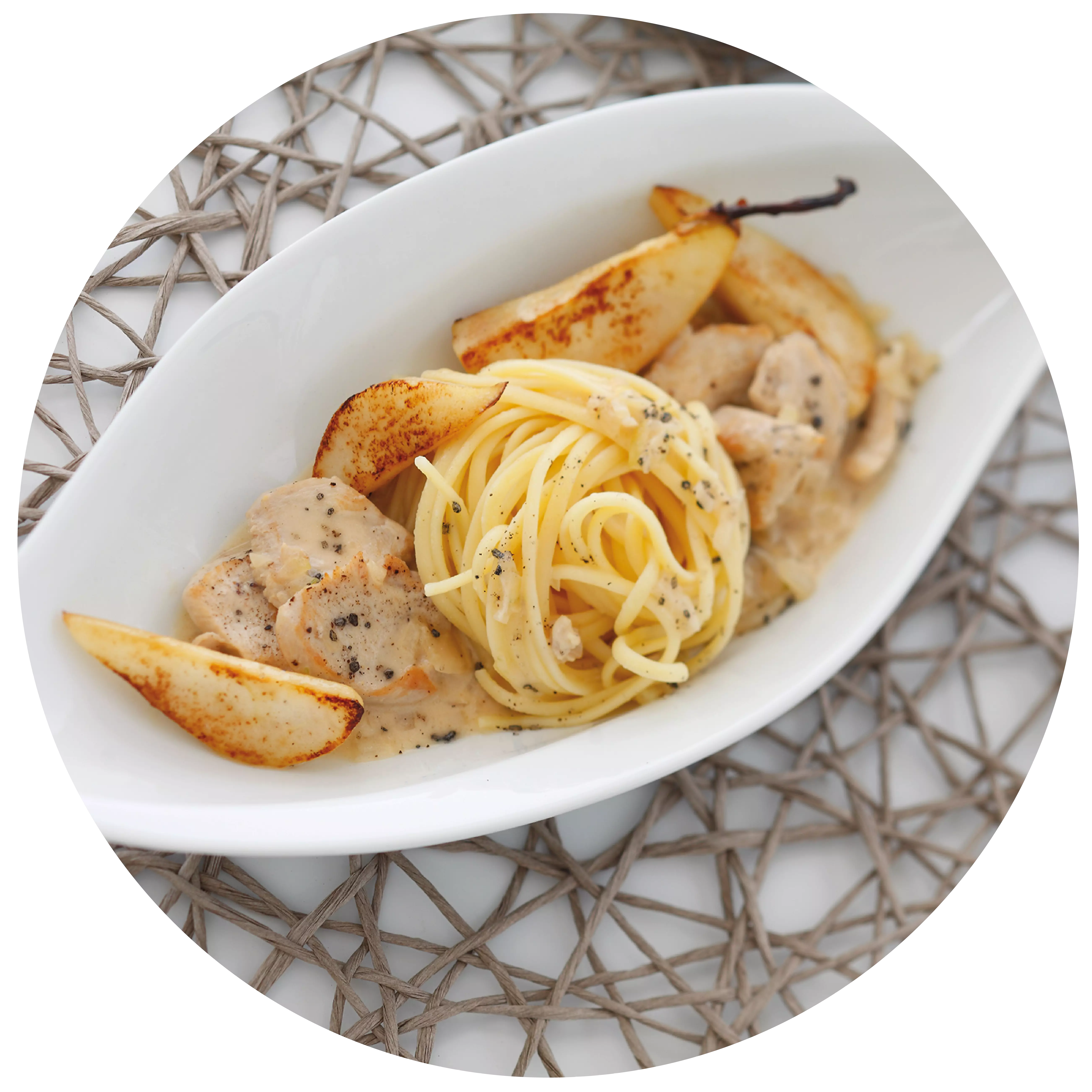
Teaser
Events
-
Show
winetasting in our winery - blind tasting
Mainz-Hechtsheim


